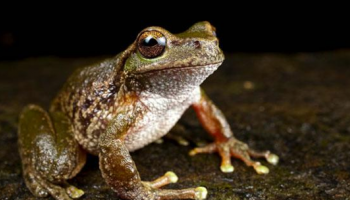Submerged Landmass Zealandia a Candidate for Continent
Zealandia, a region that is two-thirds the size of Australia in the southwest Pacific Ocean, is a step closer to being recognised as a continent. It covers a nearly 5 million square kilometre, area that centres on New Zealand and encompasses New Caledonia, Norfolk Island, the Lord Howe Island group and Elizabeth and Middleton reefs.
The area is believed to have once been a part of Gondwana – a supercontinent which made up the majority of landmasses in the Southern Hemisphere. However, 94% of the landmass sunk below sea level between 60 to 80 million years ago.
A paper published in the journal of the Geological Society of America -reportedly the first robust, peer-reviewed scientific paper to define and describe Zealandia, contends it is distinct enough to constitute a separate continent.
Source: Geology Society of America Today
What’s the Buzz? Bees Can Learn New Tricks
Bumblebees have displayed surprising cognitive flexibility in a recent study published in Science. This ability to learn means that, despite their small brains, certain species of bees could develop completely novel behaviours in response to environmental pressures.
The bees were tested in a task that involved moving a ball to a goal for a reward after a demonstration. It was found that bees completed the task quicker if they first observed a live or model demonstrator.
Bees were also able to solve the task more efficiently than in the demonstration. Unlike the demonstrator, when given a number of balls to choose from, the bees used the ball closest to the goal. This occurred even when the demonstrator’s ball colour differed from the ball chosen.
Source: Science
WHO Top 12 Bacterial Threats to Human Health
The World Health Organisation (WHO) has published a list of antibiotic-resistant “priority pathogens” that pose the greatest threat to human health. This catalogue of 12 families of bacteria aims to address growing global resistance to antimicrobials by promoting the research and development of new antibiotics.
The listed bacteria are resistant to multiple antibiotics, can develop resistances to new treatments, and pass along genetic material for other bacteria to become drug-resistant. The WHO list divides these bacteria into three categories, according to the need for new antibiotics: medium, high and critical priority.
The criteria for compiling the list were: the deadliness of infections; long hospital stays required for treatment; frequency of antibiotic resistance; infectiousness; ease of prevention; treatment options remaining; level of research and development of new antibiotics.
Source: World Health Organisation
Brain Scans Spot Autism Signs in High-Risk Babies
MRI brain scans can adequately forecast autism spectrum disorder (ASD) diagnoses in ‘high-risk’ babies whose siblings have autism, according to a US Infant Brain Imaging Study.
In the study, researchers scanned the brains of 106 ‘high-risk’ infants at age 6, 12 and 24 months. They found that ASD diagnoses and behavioural signs of autism in ‘high-risk’ babies could be correlated with faster than average brain growth 8 out of 10 times.
These findings could potentially be used as an ASD diagnostic tool as neither genetic nor behaviour diagnosis methods have been successful. However, this research cannot yet be applied to a general non-‘high-risk’ population; a larger study replicating the results needs to be conducted before findings are conclusive.
Source: Nature
Facts are a Bit Woolly on the Woolly Mammoth Resurrection
A Harvard genetics team has spliced 45 mammoth-like edits of DNA into the Asian elephant genome using the gene-editing tool Crispr. This has been widely reported alongside headlines saying woolly mammoths could be ‘de-extinct’ in two years.
These headlines are based off a quote from Harvard geneticist Prof George Church during an American Association for the Advancement of Science annual meeting. Church said his team was aiming to produce a hybrid elephant-mammoth embryo, an elephant embryo with mammoth traits. He speculated that it could happen in a couple of years.
The research project at its current stage has no plans to resurrect a mammoth. The project has two goals: using mammoth genes to save the endangered Asian elephant and helping to fight global warming.
Source: The Guardian, New Scientist, Medium
Earth’s Deepest Ocean Trenches are Highly Polluted
According to a discovery published in Nature Ecology and Evolution, deep ocean trenches, six to eleven kilometres below the surface, are 50 times more polluted with toxic and industrial chemicals than river systems in China. The pervasiveness of pollution suggests better management and monitoring of these environments are needed.
The study analysed tiny deep-sea crustaceans and found that even the deep-sea wilderness is impacted by human degradation. It also showed a strong correlation between the level of pollution on the surface and deep-sea waters.
The investigation was conducted by a team of Scottish researchers on the world’s deepest marine trenches: the Mariana Trench in the west Pacific Ocean above Australia, and the Kermadec Trench near the north-eastern tip of New Zealand.
Source: ABC


